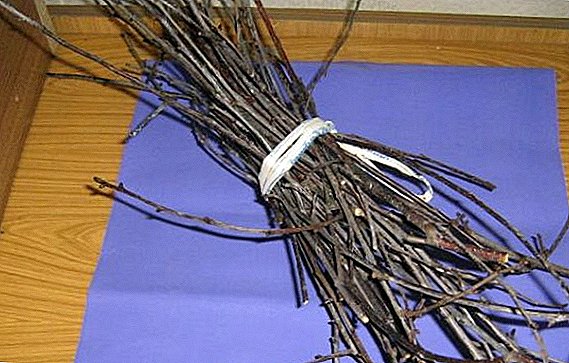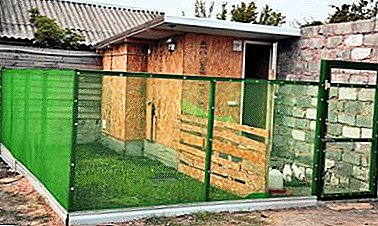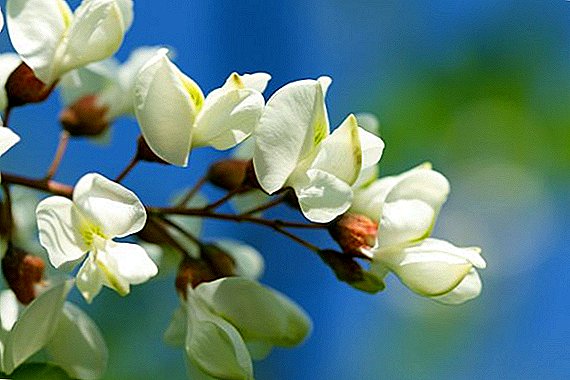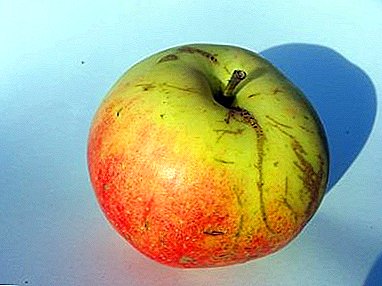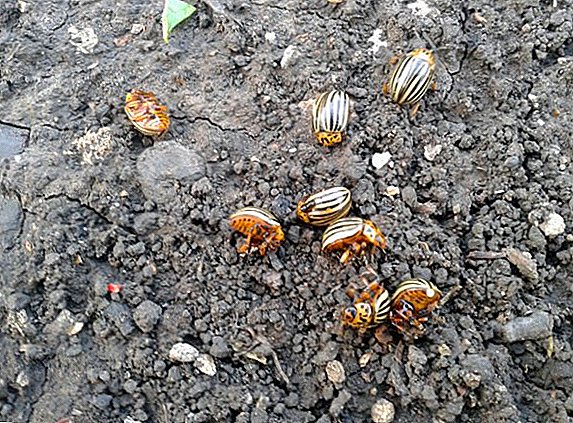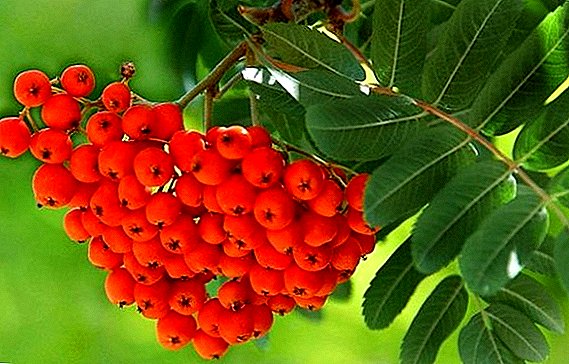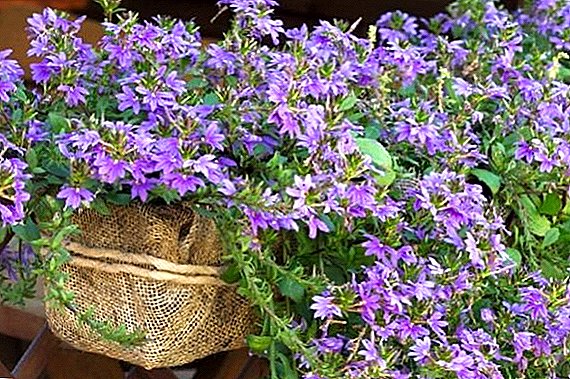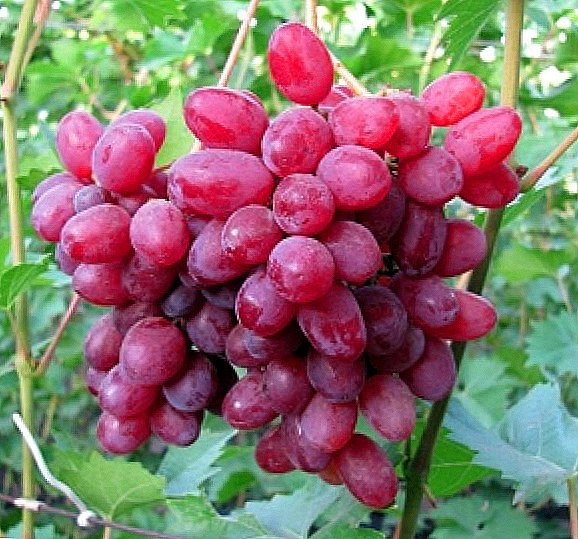
Those who want to grow at home or in the country grapes often spend a lot of time to find the best variety for themselves.
And they do it for a reason: it’s better to spend a couple of days analyzing the Internet space than to plant the first bush and after a few years give up on it.
Below we want to acquaint you in detail with one of the most promising and productive grape varieties, which is ideal for growing on home plots - Veles grapes.
In addition to large volumes of harvest, which can be achieved with a single bush, the grapes themselves have a beautiful appearance and taste.
For objectivity, we will tell about its shortcomings.
What will please Velez, the grapes of the god of fertility?
This grape variety is not for nothing called the name of the Slavic god who was responsible for fertility. The Veles grapes are indeed fertile, in which the great merit of the parent varieties: "Sofia" and "Rusbola".
As a result of crossing these varieties by the breeder Zagorulko, who is engaged in viticulture as an amateur, and thanks to the excellent weather conditions, an excellent permanent grape was born. Today the variety is widely distributed throughout Ukraine, the south of Belarus, as well as in the Central and Southern regions of Russia.
Appearance and dimensions of the cluster of grapes "Veles"
The weight and size of the average cluster, which can ripen on the grape shrub varieties "Veles", can be attributed to its large and very large. In particular, the majority of clusters during the period of removable maturity are capable of reaching a mass of more than 3 kilograms, and the smallest clusters weigh 0.6 kilograms. The length of the bunch is on average 18 centimeters, and the width can be up to 13.
The berries on the bunch also have a beautiful view and size. They weigh about 4-5 grams, differ in pink skin and transparent amber pulp. At the same time, due to the high density of the pulp, in which the seeds are absent or absolutely not felt, the fruits of the Veles grapes are extremely palatable. The skin of the grape berries of this variety is thin, with food also not felt. When they eat, there is a not very distinct aroma of muscat.
The volume of the harvest of grapes "Veles": what will please the variety
Not to note the high yield of this grape variety is not possible. Thanks to the vigorous shrub and the ability to get a pasikovy harvest, about 4-6 kilograms of grapes get from one bush. But, with good care, its volume can increase significantly. An important factor is the stability of the crop, regardless of the age of the bush.
It is worth paying attention to the fact that this variety has a very short period of ripening of the crop. The growing season of the grape bush lasts only 95-100 days. With good bush lighting and good weather conditions, harvesting is possible at the very beginning of August. It is for this reason that the variety is ideal for the climate of Central Russia and the Moscow region, as it has time to mature before the onset of cold weather.
If on the stepsons, which are very abundantly formed on the bush, the crop is also formed that you decided not to remove, then it will be possible to remove it with the arrival of October. Naturally, good weather conditions of Central and Southern Ukraine will be necessary for its aging.
Advantages of "Veles": what can boast the most successful grape variety?
• Large yields of high-quality berries by all criteria.
• Early ripening of the crop.
• With stable and dry weather, grapes and clusters are capable of maintaining a beautiful appearance and taste for a long time (about 1.5 months). Berries are not showered on their own.
• Due to the density of the pulp of the grapes Veles, the crop without damage endures long-term transportation.
• The grapevine is not damaged when the air temperature drops below -21 ° C, however, this crop requires shelter for the winter. Major eyes can be severely damaged.
• The presence of a bisexual flower simplifies the features of grooming and planting the variety.
• Grapes have an average resistance to fungal diseases that are most common in the vineyards: powdery mildew and oidium.

What can disappoint the grapes "Veles": the shortcomings of the variety
Unfortunately, but the finest harvest of the described variety can be significantly affected in bad weather conditions, especially with high humidity and frequent precipitation. In this case, the berries crack, which causes them to rot. Under similar weather conditions, it is imperative to harvest the crop in a timely manner and store it in dry rooms.
The disadvantages include the fact that the Veles variety is very young and has not been studied enough yet. Thus, depending on growing conditions and climatic conditions, it may exhibit other not very good characteristics. This is especially true of its resistance to diseases and pests. Thus, in order not to lose the grape harvest, it is recommended to spray the bush with special universal preparations prophylactically.
What is special about planting Veles grapes: necessary information and instructions
Breeding characteristics of the grapes "Veles"
For this variety are possible almost all types of planting of grapes, except for sowing seeds. It is best to purchase seedlings of this class in specialized nurseries, which can be grown on their own roots or grafted to other rootstocks.
You can do the independent harvesting cuttings from the grape bush, root them in the soil and then plant, or plant in the old stock. The quality of the grown shrub practically does not depend on the method of planting, only in case of grafting on the old stock, the shrub will be able to develop much faster and begin to bear fruit.
Spring and autumn planting of grapes "Veles": pros and cons
The question of exactly what time of year to plant grapes is very serious. Indeed, in any case, there are both pluses and shortcomings.
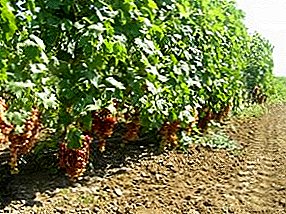
Springtime is certainly more optimal for planting seedlings and for grafting. After all, there is a warm season and a whole growing season, during which a new bush will have time to take root and grow strong to survive the first winter. Besides, The Veles grapes planted in spring already during the second growing season may please with the first inflorescences and crops.
However, in the spring it is much more difficult to find the desired and undamaged sapling and cutting with which the nurseries simply teem in the autumn. When spring planting is also very important not to miscalculate with the landing time: it can stretch from the last days of March to the last days of May. When planting early it is important to harbor a sapling.
Autumn planting is good because at this time you can not only find a lot of honeycombs of seedlings, in particular, the “Veles” variety, but also have to work less with it. The fact is that another drawback of spring is often dry soil, which requires frequent watering. In the autumn, it will be enough to water only the grapes planted, to cover and forget about it before the onset of spring heat.
In fact, the effect of planting will be the same as in the spring, because in cold weather, the sapling will not grow, it is simply stored in the soil. But with such “storage” the probability of damage to a seedling by low temperatures and freezing of the soil is very high. Also, if it is bad to cover, all the moisture can come out of the sapling with frost, which will reduce its adaptability.
Place for planting grapes: what you need to know about the whims of "Veles"?
Almost all grape varieties have such a feature as a strong dependence on good lighting and a cozy place to grow. Sunlight and heat are the key to quick ripening of the crop, and the absence of cold drafts - preservation of inflorescences.
The soil grapes "Veles" loves fertile, with a good ability to pass moisture. Excessive wet marshy soil is categorically not suitable for this variety, as it will cause cracking of berries. It is better to choose black soil or to bring the soil ideality artificially, by adding fertilizer to it, creating a drainage system. Also, it is very important to choose those places where groundwater does not rise above 1.5 meters even with heavy precipitation.
When planting several bushes, it is also worth considering the necessary distance between them: optimally retreat by 1-1.5 meters.
The fact is that in this variety the bush has very good growth, for which it needs a lot of space. If the bushes are planted very thickly, they can shade each other. Grapes are often planted near the walls of buildings, and in such a case it is necessary to retreat from the building by at least 0.7 meters so that the foundation does not interfere with the development of the root system of the bush.
Planting seedlings grapes "Veles": the order of the task
Before planting, it is very important to choose the sapling itself. A healthy and intact seedling has white roots and a green cut. Spring seedlings grown on their own roots, have green shoots with leaves. Before planting, the roots of a seedling must be dipped in water for a day or two, and also treated with a solution that is able to stimulate root formation. Such a solution can be made on the basis of the drug "Humate", whose concentration in 1 liter of water should not exceed 10 drops.

Pit preparation and the planting of the seedling itself also has many nuances:
• It is recommended to prepare the pit much earlier than the landing itself. For spring planting of grapes, this should be done in the fall so that the soil can sift well. When spring planting pit digging for 2 weeks. In addition to the pit, it is important to prepare the site in advance: dig it up and apply fertilizer.
• The depth and width of the pit should be at least 0.8 meters. This will put a good layer of fertilizer on its bottom: humus and mineral fertilizers mixed with fertile soil. Having filled this mixture to the bottom of the pit, it is very important to cover it with simple soil, which will make it possible not to burn the roots of the seedling during planting.
• The seedling is placed in a pit at such a depth that its root collar will be above the soil surface. If the pit is fresh, you can raise it above the soil even by 5 centimeters. Bury the grape seedling should be very carefully and slowly, trying not to damage the roots, but do not leave airbags near its roots. Therefore, having dug a hole only half in, it is recommended to pour in a bucket of water and then complete the process.
• Having planted a grape seedling it is poured over with 2-3 more buckets of water (depending on soil moisture) and mulch the soil around it.
• While the soil is loose, it is imperative to drive a strong support near the sapling. It will allow you to direct the growth of the vine in the direction you want.
How to graft a grape "Veles" on the old stock?

In order to have a good grape graft graft, you need to pick a good stalk and a good stock. The stalk is harvested from the Veles grapevine and must be waxed (this procedure allows you to retain moisture in it for much longer). The lower part of the cutting must be cut with a wedge, which serves as the basis for its good rooting. Also, the cut-off part is kept in water and root-forming solution before grafting.
In a well-trimmed after removing a bush and a split old stock, the stalk is placed only in the trimmed part. After this, the stock is very tightly tightened with the help of fabric or lace. If the stock is wide - more than one cutting can be placed in it. To preserve moisture in the stock and cuttings, it is recommended to cover the inoculation site with wet clay and cover.
Briefly about the features of care for grapes "Veles"
For optimal growth of the bush and the formation of the harvest, grapes require a lot of moisture. It is not necessary to water the bush very often, because it has a strong root system and is able to “extract” moisture from the soil on its own. However, during the most responsible vegetative processes of watering it is necessary to carry out the following:
• At the time of the first buds blooming on the vine
• Before flowering
• At the time of the formation on the clusters of grape peas.
To make irrigation more effective, they carry out another important action: they mulch the soil around the vine. In addition to retaining moisture from evaporation, mulch also serves as an excellent fertilizer. The fact is that the best mulch is stubborn and blackened sawdust, wet forest moss, peat and humus, which, over time, decompose and saturate the soil with nourishing grapes.
It is optimal to make a layer of mulch about 3 centimeters so that it does not impede the entry of air into the soil.
It is also interesting to read about the autumn prodkormku grapes
But, the mulch is not able to satisfy absolutely all the requirements of the grape bush for top dressing, therefore, periodically humus, potassium and phosphorus should be added to the soil for digging or as a solution. It is worth considering that an excessive excess fertilizing can be detrimental to the grapes, so it is important not to overdo it.
Before the onset of winter or very early spring, the grape bush is pruned. Pruning not only allows you to form the correct shape of the bush, but is a good stimulant to increase the quality of the crop. For a bush of grapes "Veles" optimally remove about 6-8 holes. Leave no more than 4 sleeves. With the likelihood of severe frosts, shorten the vine can be stronger. Also, pruned and damaged parts of the vine, which are completely removed and burned.
We have already mentioned above that this variety requires sheltering for the winter. With only young saplings, it is easier to carry out this task: you can use a plastic valve with a cropped bottom or another large container without a bottom. It is set above the seedling and completely covered with soil until spring. Large and adult bushes are covered with a film, from which something like a tunnel is created. Also, for the winter shtamb bushes as densely covered mulch.
From the defeat of fungal diseases to protect the grape bush allow special sprays, which are carried out prophylactically each year. The frequency of such spraying should be at least 3 times per season (can be carried out at the same time as watering). Herbicides are usually used for spraying, but it is more optimal to select the drug specifically for the type of disease that will make the fight against it much more effective.


